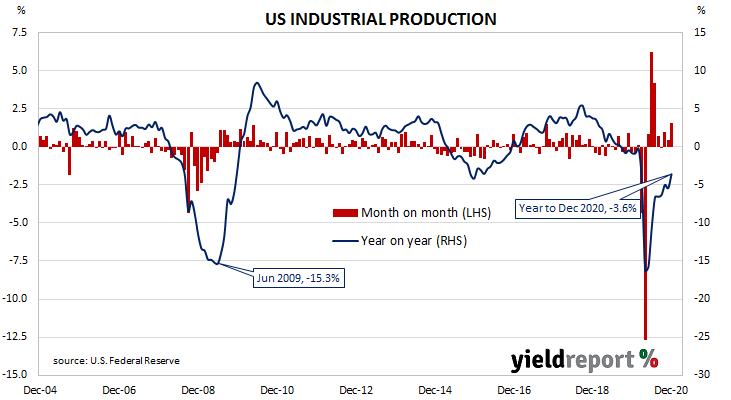Summary: US output jumps in December; rise much higher than expected figure; capacity utilisation rate increases to mid-70s.
The Federal Reserve’s industrial production (IP) index measures real output from manufacturing, mining, electricity and gas company facilities located in the United States. These sectors are thought to be sensitive to consumer demand and so some leading indicators of GDP use industrial production figures as a component. Production began recovering in May and subsequent months after collapsing through March and April.
US industrial production jumped by 1.6% on a seasonally adjusted basis in December. The result was much higher than the 0.5% increase which had been generally expected but well above November’s 0.5% rise after it was revised up from 0.4%. On an annual basis, the contraction rate decreased from November’s revised figure of -5.4% to -3.6%.

The report was released on the same day as December industrial production figures and a January consumer confidence report and US Treasury bond yields moved lower on the day. By the end of the day, the 2-year Treasury yield had lost 3bps to 0.12% while 10-year and 30-year yields had each shed 4bps to 1.09% and 1.84% respectively.
The same report includes US capacity utilisation figures which are generally accepted as an indicator of future investment expenditure and/or inflationary pressures. Capacity usage had hit a high for the last business cycle in early 2019 before it began a downtrend which ended with April’s multi-decade low of 64.2%. December’s reading increased to 74.5% from November’s revised figure of 73.4%.

